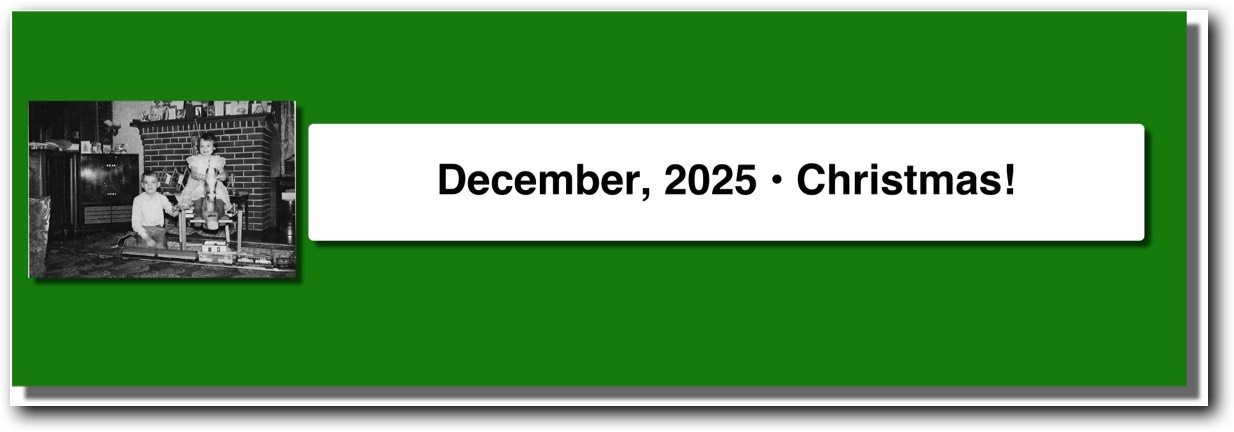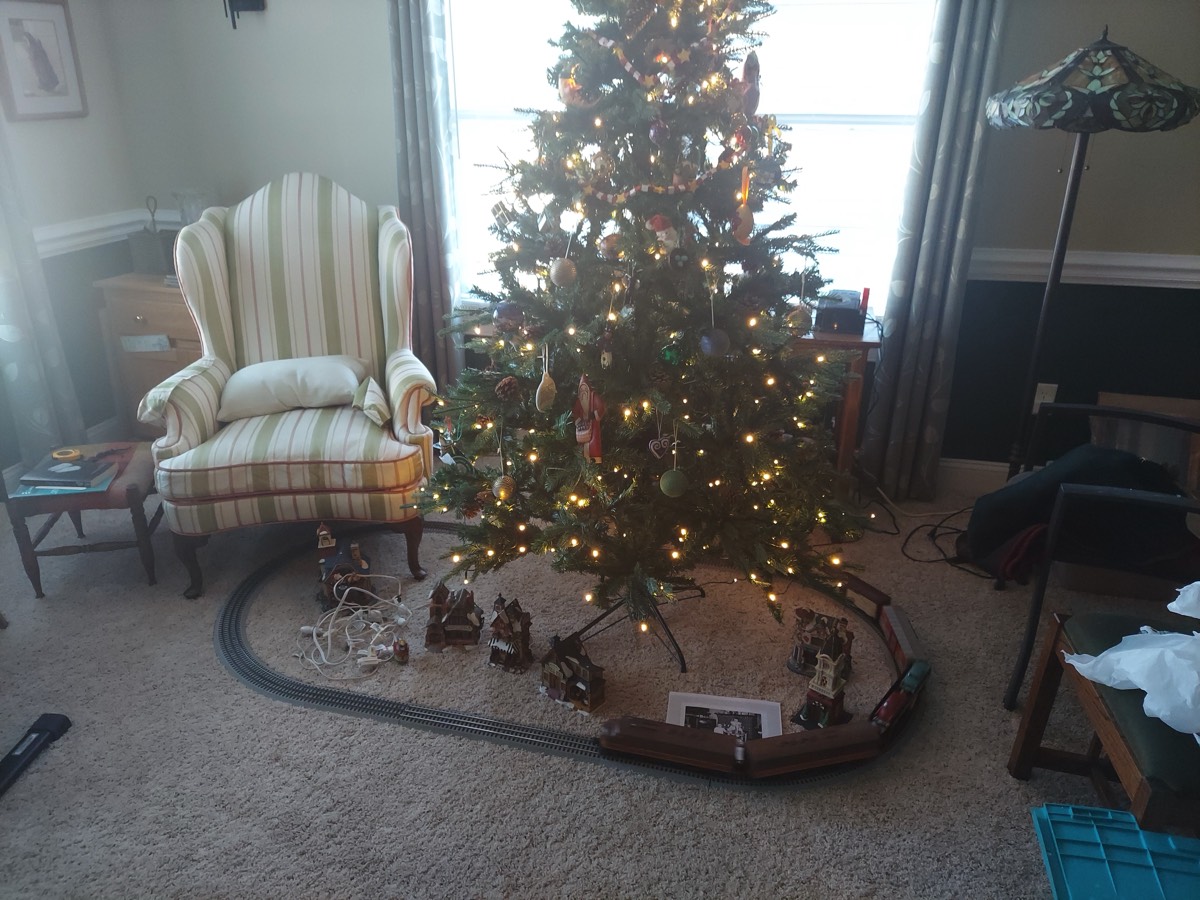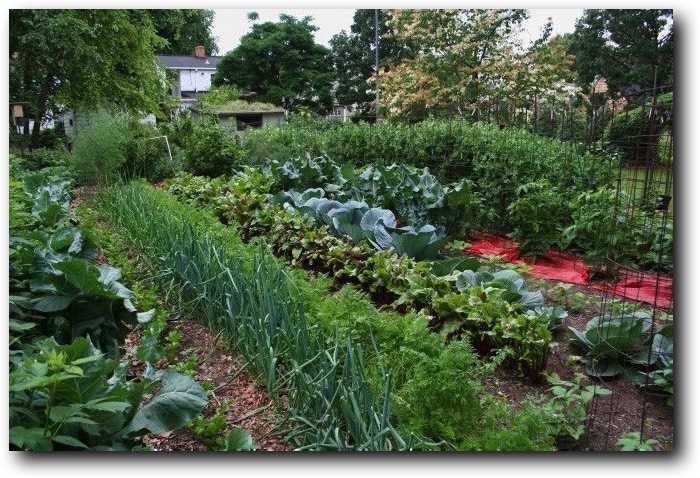

Christmas • 1956
Sixty-nine years ago, my sister and I celebrated Christmas in our rented house in Paterson, NJ. Henry Körner, a family friend of my parents had this lovely house right next door to their market, I think on 22nd Avenue. We stayed there for a short period of time after moving out of our Mill Street home. My dad liked to give nice presents, always getting them at the last minute. Both my sister and I were so surprised and happy as we both got what we wanted. She got her riding horse and I got Lionel trains. The train set cost $30 back then. Today, I can buy four sections of 10 inches of Lionel Fast Track for $29.
The hobby horse lasted quite a while, but eventually disappeared. My train set expanded when we finally moved into our Clifton home, with the Illinois Central A and B units surviving to this day. The set I now own consists of original 1956 cars, just not the ones I had originally owned.

1956 Lionel trains under the Christmas tree.
Video of 1956 Lionel trains
Click to read

November 13, 2025
Another week has gone by and we are still under the weather. In the meantime, I did sell the Florida cottage and am only waiting to sign off on the title documents that I sent down unsigned. That process should then complete the sale of the home and we can move on from there. I wish Nancy was feeling better, as she is now day 14 of Covid. Maggie was also a bit under the weather, but I hope fresh chicken later today will fix that up.
November 8, 2025
After a long period of time getting the Delaware house ready for our winter trip to Florida, disaster hit, as Nancy got Covid, late Saturday night, November 1, 2025. As the symptoms continued to grow, resulting in a couple of sleepless nights, she saw her Primary doctor on Monday, November 3, and was told she had become a victim of Covid.
Not to be left behind, I also started feeling under the weather Monday night, November 3, getting a serious sore throat. I had tried to get a test done at our fancy, local Urgent Care facility Monday afternoon, only to wait a long time, despite having made an appointment and then being told it would take 3-5 days for results. While waiting, Nancy slid out of bed. I have cameras set up, so I saw this from Urgent Care and immediately went home.
Prior to this, Nancy had fallen out of bed at 2:00 AM Sunday morning (November 2) and I had to call 911 to get help from the EMT unit.
By Wednesday, November 5, after lots of salt water gargling, drinking chamomile tea and sleeping in 2-3 hour spurts, I began to regain my composure. My throat felt much better and I was starting to regain some of my strength.
Unfortunately, now 7 days into this mess and Nancy is still sick, still in pain, still struggling. She is shaky, unable to stand without help from me. There was nothing given to her to help, no instructions to ease the pain or lessen the illness. She was told rest for 5 days and all will be fine.
Well, I guess this is our modern medical system at its worst. For four plus years the government was in a panic about Covid and now, “Good luck, hope you land feet first.”
Click to read

Updates: Making Progress
Oct. 24, 2025 Update
Living in Delaware means, more than likely, you will have to have a sump pump if you have a basement. After having to deal with multiple (4) sump pumps up in Massachusetts, I was hoping not to have to deal with water in the basement ever again.
Fortunately, the house has a generator and the basement doesn’t seem to have a major water issue over the 6 years we have lived here. However, cleaning the main pump and backup pump is an annual endeavor. I got started on this task a little earlier this year and it was a good thing. One of the pumps, the backup pump only 3 years old, no longer was working. It was one from a big box store that I only had running when testing. It never came into use during the rainy season. The primary pump was struggling as well, and I figured out the water was not exiting the pipe that ran down to the. Pond area.
In years past there would be a large green patch of grass where the water ran out, but none was to be found. I ended up having to dig lots of holes trying to locate the drain pipe that ran from the house down about 100 feet to near the pond.
I finally found the pipe and it was clogged up. After cleaning the pipe out, the main sump pump ran as usual, no issues. I did order another pump for the backup just in case the Zoeller pump fails. Zoeller makes very good pumps, but their on/off switch is delicate to say the least.
Over the years I have bought well over a half dozen pumps, finding them all to have weaknesses no matter what the company might say.
October cleanup
The garden cleanup has been going quite well, considering how badly the weeds had taken over. Bit by bit, the challenge of pulling out weeds was taken in earnest and small sections of weeds disappeared on an almost daily basis.
Initially pvc tubing used for irrigation, cattle panels, metal stacks, fencing and netting had to be removed. Then, the lawnmowers came into good use as both the Honda push mower and the John Deere riding mower did their job, cutting down the weeds where the tiller was then able to dig up the weeds and set them loosely on top of the ground, to be raked up and thrown away.
The wire grass (Bermuda grass) was all over the garden, some measuring 5 feet in length above the ground and probably the same underneath. There is just no end to this nasty “weed” as it takes control of an area as if it owned it (which it does if one lets it go too long). Each pile of wire grass was put into the landscape recycle bin, rather than trying to turn it into compost, since it is so hard to kill.
Plans are to prep the garden, once again, in the spring, focusing on growing cucumbers, peas, pickles, potatoes, tomatoes, onions, blueberries, and raspberries. Lettuce will be grown in the raised beds close to the kitchen and that should take care of things. Plans also include buying a freezer, since we won’t be going down to Florida anymore and we can store veggies over the winter.
Click to see Garden Photos

My dream garden. Boy do I wish my garden looked this good.






























